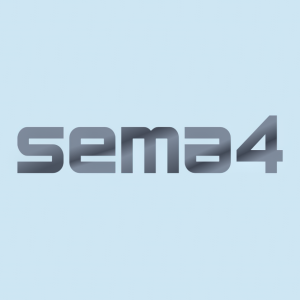Groundbreaking GUARDIAN Study Shows Benefits of Adding Genome Sequencing to Newborn Screening; Augments and Improves Standard Newborn Screening
Findings published today in JAMA (Journal of the American Medical Association) reveal limitations of current screening methods and showcase the promise of advanced genomic technology to deliver equitable health care for all children
The ongoing GUARDIAN study is a collaboration between GeneDx, Columbia University Irving Medical Center, NewYork-Presbyterian, the
GUARDIAN’s principal investigator, Wendy Chung, M.D., Ph.D., a clinical and molecular geneticist and the Chief of Pediatrics at Boston Children’s Hospital and Harvard Medical School, launched the study in 2022 at Columbia University Irving Medical Center and NewYork-Presbyterian. “Our study signifies a major advance in children’s health: the successful integration of genome sequencing into routine care accessible to all newborns,” said Dr. Chung. “By providing early diagnoses and enabling prompt treatment, we are not only proving the feasibility of this innovative approach but also advancing health equity. This milestone reflects our commitment to leveraging cutting-edge science to deliver better, faster care starting at birth.”
Findings from the study:
Over an 11-month period, 4,000 newborns were enrolled and 3.7 percent of newborns had positive screenings. The majority of those positive screens would not have been picked up by traditional NBS today. Of the 120 newborns with true positive findings,
Genetic conditions detected in newborns by GUARDIAN with known actions and treatments that are not screened with standard NBS include:
- Long QT syndrome, a rare heart condition that may cause Sudden Infant Death Syndrome (SIDS) and can be treated with beta-blockers
- Severe combined immunodeficiencies, which can be managed through stem cell transplant or gene-therapy and although included on traditional NBS, milder variants can be missed 1
- Wilson disease, which can be treated with liver transplant, as well as early zinc supplementation and a low-copper diet 2
Additionally, the study highlights the wide acceptance of more advanced and modernized NBS, with
Diagnosing these rare genetic conditions can be a lengthy and challenging process, often taking 5 years or longer if they are ever diagnosed. 3,4 During this period, pediatric patients typically undergo an average of five uninformative medical tests and accumulate around
“Today we have scalable genomic technology that provides tremendous benefits to children, families and health systems right at our fingertips. We have an opportunity to end the diagnostic odyssey by delivering actionable diagnoses to children at birth,” said Paul Kruszka, MD, FACMG, Chief Medical Officer at GeneDx. “GUARDIAN is proof of principle that we can apply medicine’s most advanced technology in an accurate, actionable and responsible way to ensure that more children have access to an early diagnosis to prevent disease progression.”
There continues to be increasing support from rare genetic disease advocates, parents, and public health professionals to expand NBS to enable timely access to new, and often precise, rare disease therapies.8,9 GUARDIAN’s panel has expanded to cover 446 genes and over 460 conditions, including a number of genes associated with conditions like epilepsy, including developmental and epileptic encephalopathy, Dravet syndrome, Rett syndrome, Angelman syndrome and Duchenne muscular dystrophy. The GUARDIAN study is ongoing, with more than 13,000 newborns enrolled to date. The study is open to all babies born at one of the NewYork-Presbyterian hospitals in
“While work remains to ensure equitable access to testing and follow-up care, studies such as GUARDIAN provide strong evidence that whole genome sequencing of newborns can enable timely access to rare disease therapies, as well as support and resources for parents and caregivers,” said Swaroop Aradhya, PhD, Vice President for Medical and Clinical Affairs at Illumina.
About GeneDx:
GeneDx (Nasdaq: WGS) delivers personalized and actionable health insights to inform diagnosis, direct treatment, and improve drug discovery. The company is uniquely positioned to accelerate the use of genomic and large-scale clinical information to enable precision medicine as the standard of care. GeneDx is at the forefront of transforming healthcare through its industry-leading exome and genome testing and interpretation services, fueled by the world’s largest, rare disease data sets. For more information, please visit www.genedx.com and connect with us on LinkedIn, Facebook, and Instagram.
About GUARDIAN
GUARDIAN (Genomic Uniform-screening Against Rare Diseases In All Newborns) is a research study conducted at
References
1. |
Pai SY, Logan BR, Griffith LM, et al. Transplantation Outcomes for Severe Combined Immunodeficiency, 2000–2009. N Engl J Med. 2014;371(5):434-446. doi:10.1056/NEJMoa1401177 | |
2. |
Eda K, Mizuochi T, Iwama I, et al. Zinc monotherapy for young children with presymptomatic Wilson disease: A multicenter study in |
|
3. |
Nguengang Wakap S, Lambert DM, Olry A, et al. Eur J Hum Genet. 2020 Feb;28(2):165-173. doi: 10.1038/s41431-019-0508-0. | |
4. |
Marwaha S, Knowles JW, and Ashley EA. Genome Med. 2022 Feb 28;14(1):23. doi: 10.1186/s13073-022-01026-w. | |
5. |
Soden SE, Saunders CJ, Willig LK, et al. Sci Transl Med. 2014 Dec 3;6(265):265ra168. doi: 10.1126/scitranslmed.3010076. | |
6. |
Savatt JM, Myers SM. Front Pediatr. 2021 Feb 19;9:526779. doi: 10.3389/fped.2021.52679. | |
7. |
Malinowski, J., Miller, D.T., Demmer, L. et al. Genet Med. 22, 986–1004 (2020). | |
8. |
Downie L, Halliday J, Lewis S, Amor DJ. Principles of Genomic Newborn Screening Programs. JAMA Netw Open. 2021;4(7):e2114336. doi:10.1001/jamanetworkopen.2021.14336 | |
9. |
Minear MA, Phillips MN, Kau A, Parisi MA. Newborn Screening Research Sponsored by the NIH: From Diagnostic Paradigms to Precision Therapeutics. Am J Med Genet C Semin Med Genet. 2022;190(2):138-152. doi:10.1002/ajmg.c.31997 |
View source version on businesswire.com: https://www.businesswire.com/news/home/20241024902651/en/
Press@genedx.com
Investors@genedx.com
Source: GeneDx







